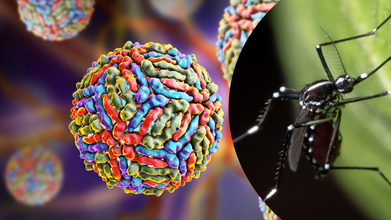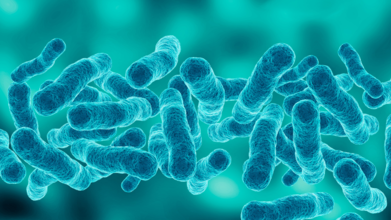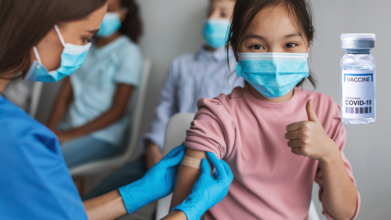- Health Conditions A-Z
- Health & Wellness
- Nutrition
- Fitness
- Health News
- Ayurveda
- Videos
- Medicine A-Z
- Parenting
- Web Stories
First Human West Nile Case Reported In Maryland While Kansas Battles Six Infections

Credits: Canva
Maryland has reported its first human case of West Nile virus (WNV) of 2025, according to the state’s Department of Health. The patient was an adult resident of central Maryland, and officials said Friday that the patient was recovering from the disease. This news highlights the ongoing caution needed as mosquito season picks up across the United States.
West Nile virus is transmitted primarily through bites from infected mosquitoes that have previously fed on birds carrying the virus. While rare, the disease can occasionally spread through other avenues, but mosquito transmission remains the most common pathway.
The majority of individuals who contract WNV have no symptoms, but in certain instances, particularly in patients with underlying disease, the virus can result in serious disease. The Centers for Disease Control and Prevention (CDC) states that common symptoms develop 2–6 days following an infectious mosquito bite and might include high fever, headache, stiff neck, confusion, tremor, convulsions, loss of vision, weakness of muscles, numbness, or paralysis.
Health authorities note that there is no antiviral treatment available for West Nile virus. The vast majority of patients recover completely, although neuroinvasive infections—where the virus invades the central nervous system—are intensive to treat and tend to have more extended recovery times.
Kansas public health officials are tracking six WNV cases this year thus far. Five of these cases have been designated as neuroinvasive, illustrating the severity of the virus. There were three cases reported in north-central Kansas, and three in south-central Kansas. Non-neuroinvasive cases usually exhibit milder, flu-like illnesses, while neuroinvasive cases can include inflammation of the brain or the surrounding tissues, confusion, paralysis, and loss of vision, said Jill Bronaugh, a KDHE spokesperson.
Though numbers fall short of last year's figures—64 cases and four fatalities—officials caution that mosquito activity will peak in late summer, raising the potential for more cases. To monitor developments, KDHE hosts a weekly-updated West Nile virus dashboard for the surveillance season, which runs July to September.
Is This A Seasonal Surge Or A Cause Of Concern?
The CDC reports that WNV activity in the United States normally begins in mid-August and lasts until early September. Around 2,000 individuals are diagnosed with the virus every year, although cases of mild or asymptomatic infections tend to be under-reported. The health authorities advise residents to use preventive strategies, such as using insect repellents, long sleeves, and pants while outdoors, and removing standing water near homes, which is a mosquito breeding site.
"Prevention is the key," states Dr. Emily Johnson, an infectious disease expert. "Because there's no treatment for West Nile, avoiding exposure to mosquitoes through bites is still the best way to stay safe and your family."
Can Mosquito Saliva Improve West Nile Virus Treatment?
In addition to prevention on a case-by-case basis, scientists are looking at new approaches to fighting mosquito-borne illnesses, such as WNV. Anita Saraf, director of the University of Kansas's Mass Spectrometry & Analytical Proteomics Laboratory, is researching mosquito saliva to determine how viruses are transferred and to discover possible therapy targets.
Saliva collection from mosquitoes is technically difficult because they only produce minuscule amounts. USDA Agricultural Research Service collaborators stimulate the mosquitoes to produce saliva, which is analyzed using sophisticated mass spectrometry procedures by researchers. Saraf's research is being done on the proteome—the entire complement of proteins—in mosquito saliva and how it gives clues about how viruses such as West Nile, dengue, yellow fever, and Japanese encephalitis go about controlling the mosquito host and then impact humans.
Her work utilizes shotgun proteomics in tandem with nanoscale liquid chromatography and tandem mass spectrometry (nLC-MS), methods sensitive enough to examine nano-gram levels of protein. "Without the sensitivity, we would require much larger protein samples," Saraf says. "Our strategy permits us to explore these viruses at the molecular level, which might guide future vaccine or therapeutic design."
Preventive Measures For People To Follow
Health officials continue to emphasize simple prevention measures as the best defense against WNV. These are:
- Using EPA-approved insect repellents
- Wearing long-sleeved shirts and pants outside
- Adding screens on windows and doors to prevent mosquitoes from entering
- Eliminating standing water within homes, such as flowerpots, gutters, and bird baths
By doing these, residents will be able to drastically lower their chances of infection, particularly when it comes to the active mosquito season.
While Kansas and Maryland are tracking WNV cases at present, the threat is spread throughout the U.S. and the world. The CDC reports that West Nile virus is a continued public health issue every summer, especially in areas with high mosquito populations. Rare neuroinvasive cases show the virus's ability to cause significant damage to the nervous system, highlighting awareness and prevention.
The research undertaken currently at the University of Kansas demonstrates the innovative work towards understanding mosquito-borne viruses at a molecular level.
Legionnaires' Outbreak: Death Toll Increases To 6 With 111 Hospitalized, How To Spot The First Symptoms

(Credit-Canva)
A sixth person has died from the Legionnaires’ disease outbreak in Central Harlem, according to New York City health officials. The city is currently investigating the outbreak that began in late July, which has now affected over 100 people.
As of Thursday, 111 people have been diagnosed with the disease. The recent death was of a person who passed away outside of New York City earlier this month, but their death was only recently linked to the outbreak. There are currently seven people hospitalized.
The city has identified and cleaned 12 cooling towers on 10 buildings, including a city hospital and a clinic, where the bacteria were found. These cooling towers, which use water to cool buildings, are believed to be the source of the outbreak.
What is Legionnaires' Disease?
Legionnaires' disease is a severe type of pneumonia caused by a bacteria called Legionella. This bacteria thrives in warm water and can spread through a building’s water system. People usually show flu-like symptoms, such as a cough, fever, and muscle aches, within two days to two weeks after they are exposed to the bacteria.
Health officials are advising anyone who lives or works in the Central Harlem area to contact a doctor if they experience these symptoms.
What Are The First Symptoms of Legionnaires’ Disease?
The disease often starts like a mild flu. For the first couple of days, you might have muscle aches, body aches, and headaches. But after this initial phase, the symptoms get much worse.
You might develop a high fever of 100.4°F or higher, along with chills and extreme tiredness. About half of the people who get sick also experience confusion or delirium. Other symptoms include an upset stomach, with nausea, vomiting, and diarrhea. Since the bacteria attack the lungs, you will likely have a persistent cough that can start out dry but may later produce mucus or even blood. You may also feel short of breath and have chest pain.

How Long Does It Take For Symptoms To Show Up?
The time it takes for you to get sick after being exposed to the Legionella bacteria is called the incubation period. It can be as short as two days or as long as 19 days. Most people, however, start feeling sick around six to seven days after they've been exposed. This is the time the bacteria need to grow inside your body before they cause noticeable symptoms.
What is Pontiac Fever?
Pontiac fever is a milder version of the same infection. Its incubation period is much shorter, usually just one to two days. The symptoms are less severe and include a flu-like sickness with muscle pain, headaches, and a fever. Unlike Legionnaires' disease, Pontiac fever usually goes away on its own without needing a lot of medical care. Because it is so mild, doctors sometimes don't even realize it's Pontiac fever.
How is Legionnaires’ Disease Diagnosed?
Doctors can figure out if you have Legionnaires’ disease using a few different tests. They will often check your blood and urine or look for the bacteria in a sample of your sputum (the mucus you cough up). They may also take a chest X-ray, but this can be tricky because the results look like other types of pneumonia.
The best way to get a clear diagnosis is through lab tests that can directly identify the bacteria. It's also a clue that you have it if your illness doesn't get better with common antibiotics like penicillin. Without treatment, the illness can get much worse and may lead to serious problems like kidney failure, respiratory failure, and even death.
A Pill In Your Cabinet That 'Millions' Take Could Help Fight The Deadliest Breast Cancer

Credits: Canva/iStock
A medication prescribed for decades to lower blood pressure may hold a surprising new use: slowing the spread of one of the most aggressive and deadly forms of breast cancer. Scientists at Monash University in Melbourne have discovered that beta blockers, medicines already used daily by millions, may shield women from triple-negative breast cancer (TNBC), a type that has few effective treatments and bleak survival rates.
The results, which appeared in Science Signaling, indicate that this group of heart drugs may open a whole new avenue in battling TNBC, providing promise to a disease that disproportionately harms younger women and is notoriously resistant to treatment.
Breast cancer is not one but a group of subtypes, each with a variable response to treatment. TNBC is characterized by what it does not have: it is receptor-negative for estrogen and progesterone receptors and non-secretor of excess HER2 protein. Lacking those targets, therapies that are effective for other breast cancers—hormonal therapies or drugs targeting HER2—are not effective.
TNBC, as defined by the American Cancer Society, grows and develops more rapidly than others, giving patients fewer treatment options and poorer prognoses. While about 90 percent of women diagnosed with other breast cancers survive at least five years, that number drops to around 77 percent for TNBC. For women with advanced-stage disease, the survival rate can fall as low as 12 percent.
Can Stress Fuel Cancer Growth?
The Monash University team wanted to understand why beta blockers, medications that work by blocking stress hormones like adrenaline, were associated with better outcomes in some TNBC patients. Previous studies had hinted at a link, but the underlying mechanism remained a mystery.
Their research uncovered a crucial detail: stress hormones can activate a receptor called the beta-2 adrenoceptor, which then sets off a cascade of signaling molecules—including cAMP and calcium—that accelerate cancer growth. This process is powered by a gene called HOXC12, which effectively “fuels” the tumor’s progression.
Here’s where beta blockers come in. By targeting the beta-2 receptor, they can switch off HOXC12, halting the process at its source. In short, a drug that slows a racing heart may also slow a racing tumor.
How Beta-Blockers Help Fight Cancer Growth?
The potential impact of this discovery lies not just in its scientific novelty but in its accessibility. Beta blockers are among the most commonly prescribed drugs in the world. One in ten Americans already takes them for conditions ranging from high blood pressure to heart rhythm disorders.
“Ultimately, this exciting discovery could pave the way to improving survival outcomes in people with TNBC when HOXC12 is found to be present,” said Terrance Lam, PhD candidate and first author of the study. “We believe further studies are urgently needed to determine if HOXC12 can be used to identify patients who will benefit from beta blocker therapy at the time of diagnosis and stop tumor spread.”
Professor Michelle Halls, senior author of the study, called the findings “exciting,” adding that the research not only confirmed the potential link between beta blockers and tumor progression but also explained why the drugs could be effective in slowing cancer spread.
A New Cancer Diagnostic Marker?
One of the most promising aspects of the study is its potential to identify which patients are most likely to benefit. Researchers noted that high levels of HOXC12 expression were strongly associated with poorer survival outcomes. This means HOXC12 could serve as a diagnostic marker—helping doctors determine, at the time of diagnosis, whether beta blockers might be added to a patient’s treatment plan.
If validated in larger trials, this approach could make TNBC treatment more personalized and cost-effective. Instead of waiting for new experimental drugs to be developed, physicians might be able to repurpose a safe, widely available medication to immediately improve outcomes.
TNBC accounts for about 15 percent of all breast cancers in both the US and the UK. While most breast cancer patients now survive at least five years thanks to improved therapies, TNBC remains stubbornly resistant to progress.
Because TNBC does not respond to hormone or HER2-targeted therapies, treatment usually relies on chemotherapy, radiation, and surgery. Immunotherapy has shown promise for some patients, but it is expensive, not universally available, and not always effective.
For this reason, the possibility of adding beta blockers—drugs that cost pennies a pill and are already well understood—could represent a major shift in the global fight against breast cancer.
How Important Is Mental Health For Cancer Behaviour?
The study also highlights the role of stress in cancer biology. Stress hormones such as cortisol and adrenaline don’t just affect mood and blood pressure; they can also influence the way cancer cells behave. By showing that stress-related pathways drive tumor growth, the research makes a strong case for viewing cancer not only as a disease of genetics but also as one shaped by the body’s physiological responses.
This finding echoes a broader movement in oncology, integrating psychological care and stress management as part of cancer treatment. While beta blockers may provide a pharmacological way to interrupt stress signaling, lifestyle interventions—such as mindfulness, counseling, and stress reduction—could also complement medical treatment.
What This Means For Cancer Patients Right Now?
It’s important to stress that while the research is promising, it’s still in its early stages. The Monash team has identified a mechanism and a potential pathway, but clinical trials are needed before beta blockers can be officially recommended as part of TNBC treatment.
For now, experts urge patients not to self-prescribe or change medications without consulting their doctors. While beta blockers are generally safe, they can cause side effects and interact with other medications.
Signs Of Breast Cancer That Aren't A Lump
Still, the research represents a rare piece of good news in the fight against TNBC—a cancer subtype that has long frustrated patients and doctors alike. Recognizing breast cancer beyond lumps. Most people associate breast cancer with the discovery of a lump. But doctors emphasize that other visual and physical signs can also be key to early detection. These include:
- Nipple changes or bloody discharge
- Breast dimpling or skin thickening
- A sore on the breast that does not heal
- Swollen lymph nodes in the armpit
- Unexplained breast pain
Experts recommend regular self-checks, paying attention not only to touch but also to visual changes in the mirror. Early detection remains the most powerful tool in improving survival outcomes across all breast cancer types, including TNBC.
Beta blockers, once thought of solely as heart medications, could become an unexpected ally in the battle against triple-negative breast cancer. By targeting stress hormone pathways and shutting down the HOXC12 gene, they may offer a low-cost, widely accessible way to slow tumor progression.
Young Kids Should Get Covid-19 Vaccine: US Pediatric Group Breaks Away From CDC Guidelines

Credits: Canva
August 19 marked a sharp split in U.S. vaccine policy after the American Academy of Pediatrics (AAP) released updated immunization guidelines that call for COVID-19 vaccination in young children. The move breaks from recent federal guidance shaped by Health and Human Services Secretary Robert F. Kennedy Jr.
Why the AAP is Standing Apart
The AAP, which represents more than 65,000 board-certified pediatricians, has long been a central authority on children’s health. In June, the organization had already signaled its concern, saying the federal process for creating vaccine schedules was “no longer credible” after Kennedy dismissed the 17-member Advisory Committee on Immunization Practices. That panel traditionally guides the CDC’s vaccine recommendations.
Kennedy replaced the group with appointees that many in the medical community consider unqualified, several with ties to anti-vaccine organizations. The May announcement that COVID-19 vaccines would no longer be on the CDC’s recommended list for healthy children and pregnant women further deepened tensions.
“The AAP will continue to provide recommendations that are rooted in science and in the best interest of children and families,” AAP President Dr. Susan J. Kressly said in a statement.
Also Read: CDC No Longer Recommends COVID Vaccine For Kids And Pregnant Women - What Do Experts Think?
What the AAP Recommends for Kids
The updated AAP schedule covers vaccines from birth through age 18, including influenza, RSV, and COVID-19. The pediatric group recommends:
Ages 6 months to 23 months: All children should receive the updated COVID-19 vaccine to lower the risk of severe illness.
Ages 2 to 18: Children and adolescents without other high-risk conditions should be offered the vaccine if not already immunized.
High-risk children and adults: Those with conditions like weakened immune systems should receive the vaccine regardless of age.
The organization stressed that its guidance is based on peer-reviewed evidence, countering federal messaging that leaves vaccination decisions to parental consultation with physicians.
Federal Guidance Under Kennedy
The CDC has not completely eliminated COVID-19 vaccination from its schedule but shifted language in August to a softer stance. Instead of recommending annual doses for children, the agency now advises parents to “consult with their child’s physician” to decide.
Kennedy has said publicly that the vaccine should be reserved for people over 65 or those at high risk. The CDC website still lists recommendations for everyone over six months, but with a notice that the information is being updated to reflect new schedules.
Experts have warned this change may create barriers to access, since insurance coverage often mirrors CDC recommendations. Families who want their children vaccinated but do not fall under the new federal priority categories could be forced to pay out of pocket.
Read More: FDA Approves New Covid Vaccine For Kids With Selective Eligibility
The Growing Clash Between AAP and HHS
The disagreement has sparked sharp exchanges between pediatric leaders and the federal government. HHS Communications Director Andrew Nixon accused the AAP of advancing commercial interests, citing pharmaceutical funding ties.
“By bypassing the CDC’s advisory process and issuing its own recommendations, the AAP is putting politics above children’s health,” Nixon said in a statement.
Kennedy echoed those concerns on social media, calling the pediatric guidance “corporate-friendly” and suggesting it primarily benefits vaccine manufacturers. He also warned that diverging from federal recommendations could leave doctors legally vulnerable, since liability protections under the Vaccine Injury Act apply only to CDC-approved schedules.
AAP President Dr. Kressly rejected those claims. “This attack on the integrity of pediatricians is unfortunate, but it does not change the facts. Our immunization recommendations are rooted in decades of peer-reviewed science,” she said.
What Comes Next
The newly appointed federal Advisory Committee on Immunization Practices has not yet voted on COVID-19 guidance and is expected to meet again in early fall. Meanwhile, the FDA is weighing whether to revoke authorization of the Pfizer COVID-19 vaccine for healthy children.
The split leaves parents facing a confusing landscape. While federal authorities have scaled back recommendations, pediatricians say the science still supports protecting children with the COVID-19 shot. As the AAP put it, the mission is clear: to keep kids, families, and communities healthy, regardless of shifting political winds.
© 2024 Bennett, Coleman & Company Limited

